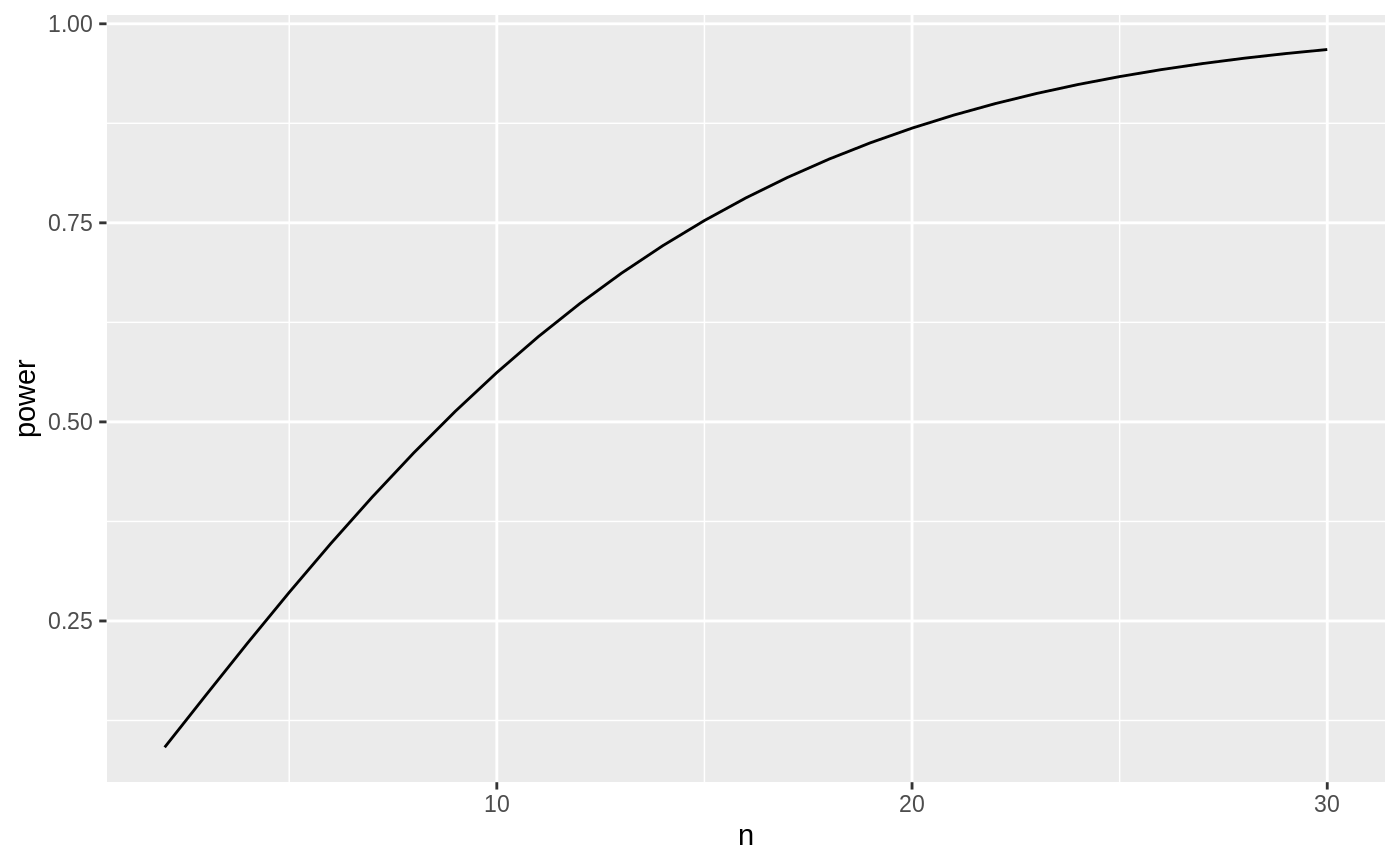Tidy summarizes information about the components of a model. A model component might be a single term in a regression, a single hypothesis, a cluster, or a class. Exactly what tidy considers to be a model component varies cross models but is usually self-evident. If a model has several distinct types of components, you will need to specify which components to return.
# S3 method for power.htest tidy(x, ...)
Arguments
| x | A |
|---|---|
| ... | Additional arguments. Not used. Needed to match generic
signature only. Cautionary note: Misspelled arguments will be
absorbed in |
Value
A data frame with one row per parameter passed in, with
columns n, delta, sd, sig.level, and power.
See also
Other htest tidiers: augment.htest,
tidy.htest,
tidy.pairwise.htest
Examples
#> # A tibble: 29 x 5 #> n delta sd sig.level power #> <int> <dbl> <dbl> <dbl> <dbl> #> 1 2 1 1 0.05 0.0913 #> 2 3 1 1 0.05 0.157 #> 3 4 1 1 0.05 0.222 #> 4 5 1 1 0.05 0.286 #> 5 6 1 1 0.05 0.347 #> 6 7 1 1 0.05 0.406 #> 7 8 1 1 0.05 0.461 #> 8 9 1 1 0.05 0.513 #> 9 10 1 1 0.05 0.562 #> 10 11 1 1 0.05 0.607 #> # … with 19 more rows
